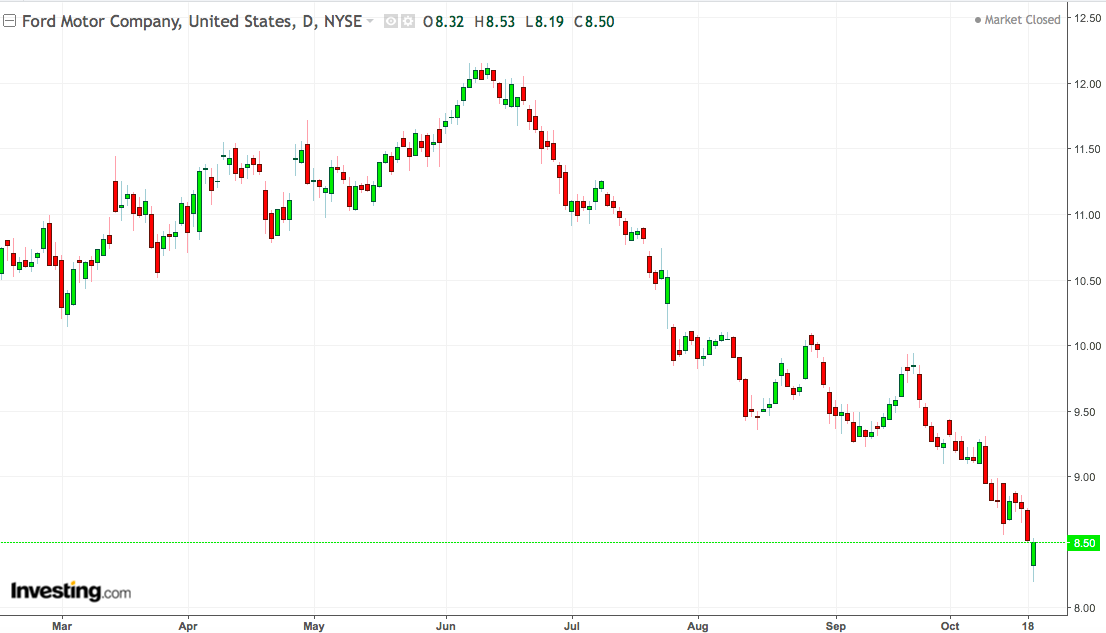- Reports Q3 2018 earnings on Wednesday, October 24, after the market close
- Revenue Expectation: $33.5B
- EPS: $0.29
These days there's lots of negativity around Ford Motor Company (NYSE:F) shares. Some of it is certainly justified.
The second-largest carmaker in the US has been struggling to arrest declining profits. As well, the company has had a difficult time communicating to investors exactly how it plans to succeed in this rapidly evolving auto market, where electric cars and ride-sharing services pose a challenge to traditional carmakers.
Ford’s second quarter net profit fell by almost half, hurt by troubles within the company’s Chinese and European markets. Adding to Ford's woes: the escalating trade war between the US and China which may cost Ford $1.6 billion in North America in 2018 alone.

These negative developments have hit Ford shares hard. After losing 30% of its value over the past 12 months, shares are now trading at $8.5, the lowest level for the stock since July 2012.
For the third quarter, analysts expect Ford to report earnings of $0.29 per share, on average, down from $0.43 during the same period a year ago. The company is also expected to report $33.5 billion in revenue for their automotive segment, not that different from the $33.65 billion reported a year ago.
It’s hard to remain positive about Ford's outlook when the company has done little to make a quick turnaround. In our view, however, Ford’s valuation has become compelling after its steep price decline, especially now that the stock is trading below $10.
There is a little reason to believe that Ford is descending into a full-blown financial crisis in which it will be forced to cut its richly yielding, 6.85% dividend anytime soon. That extreme scenario is already built into the current valuation, but we don’t think that it will play out. Instead, Ford has entered a phase where its bottom line will remain depressed for the next several years, but its profits won’t be completely wiped out as many stock bears are predicting.
To defend its $0.15 a share, quarterly payout, Ford has a big cash hoard—more than $25 billion. That is enough money to sustain new product development and the dividend during times of distress. If you include loans, the company has access to more than $36 billion in liquidity. With such fluid assets, Ford has the financial wherewithal to defend its payouts.
There is no doubt that Ford’s core automobile division isn’t generating sufficient cash to cover its dividend, but the Ford Credit division, the company's financial services segment, typically generates around $1.5 billion per year for the parent company. That alone could cover about two thirds of the $2.4 billion yearly dividend payments Ford hands out.
Additionally, we believe Ford’s plans for restructuring are solid and can improve future profitability. The automaker plans to stop selling traditional sedans in the US over the next few years. It also intends to update virtually all of its existing crossover, SUV, and truck models as well as to introduce several new models in each category. This should eliminate a long-standing source of losses while boosting profitability at Ford's North American division.
Bottom Line
Ford will likely announce another profit decline when it reports results on Wednesday. We believe that any further weakness in shares should be used as a buying opportunity with which to lock in one of the highest dividend yielding companies in the S&P 500.
